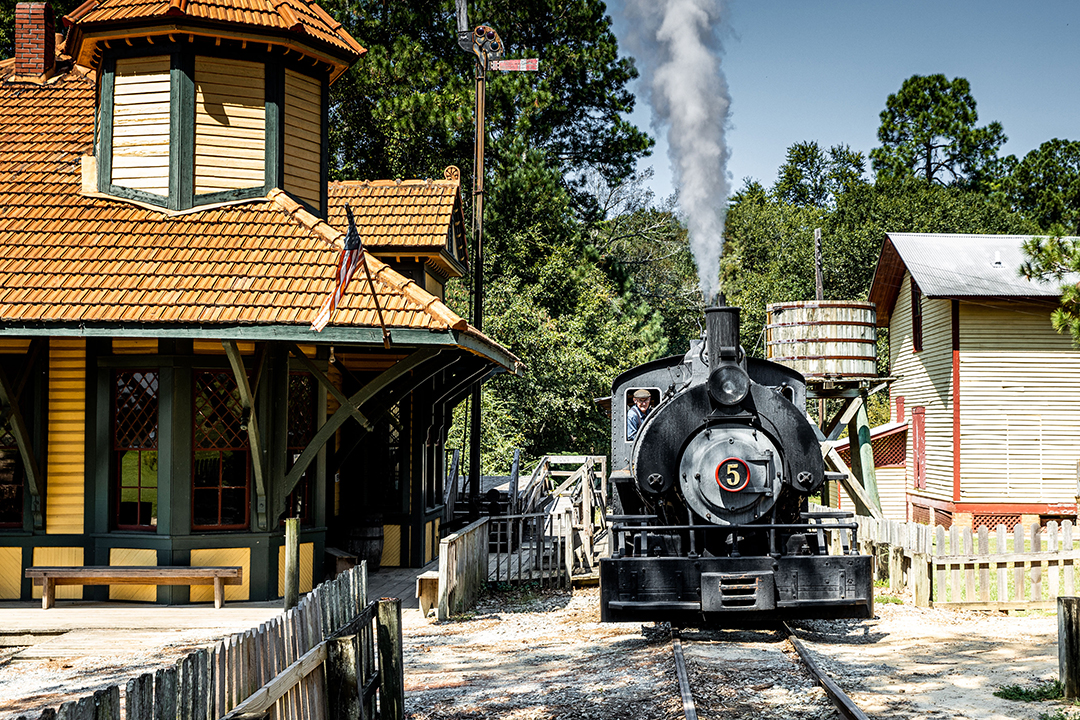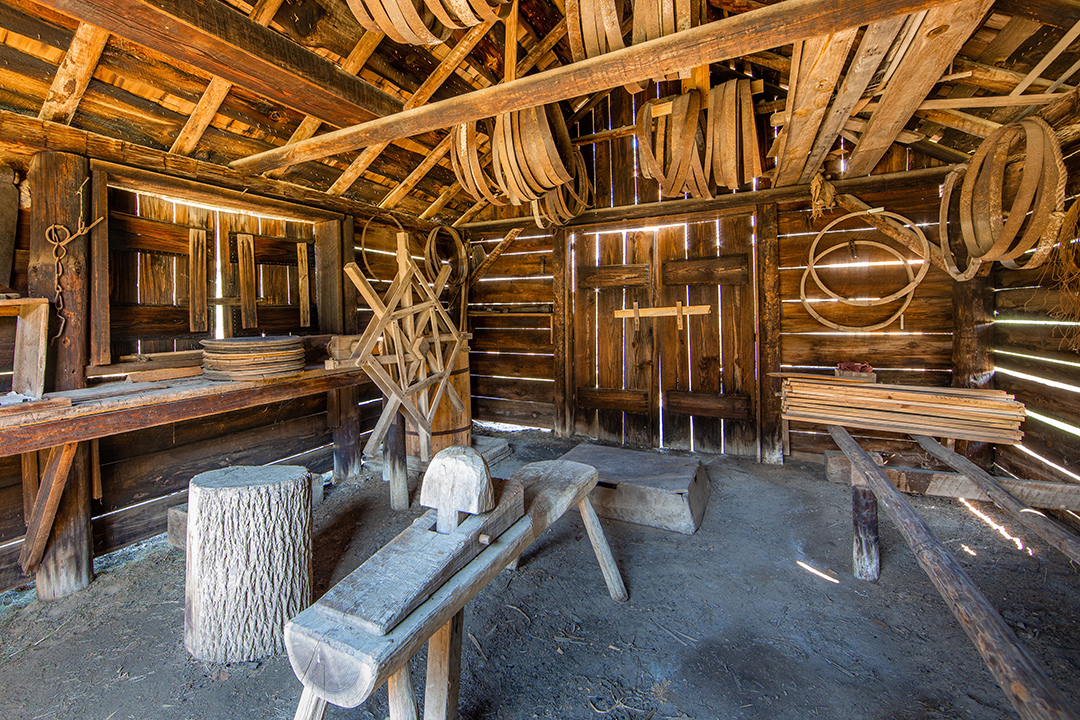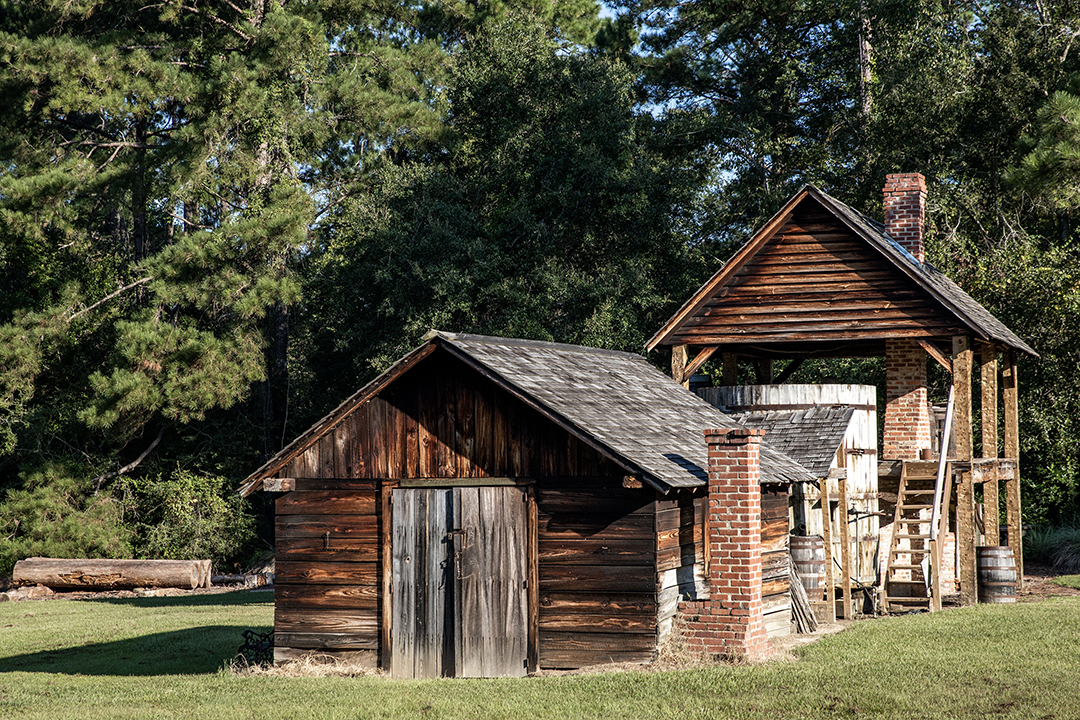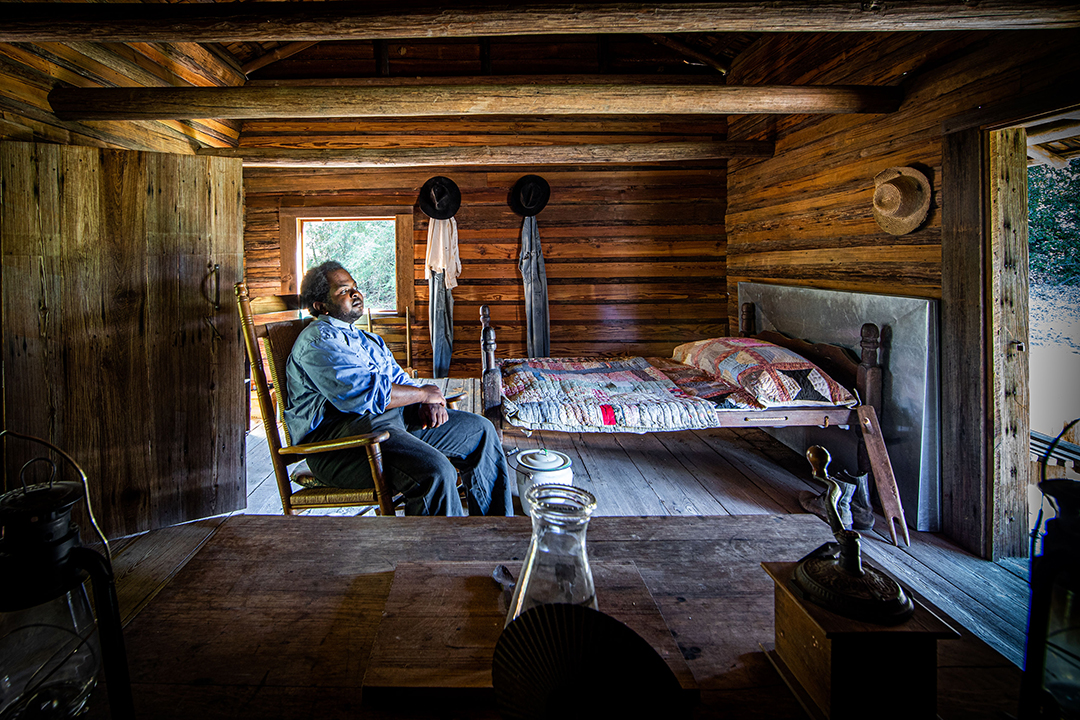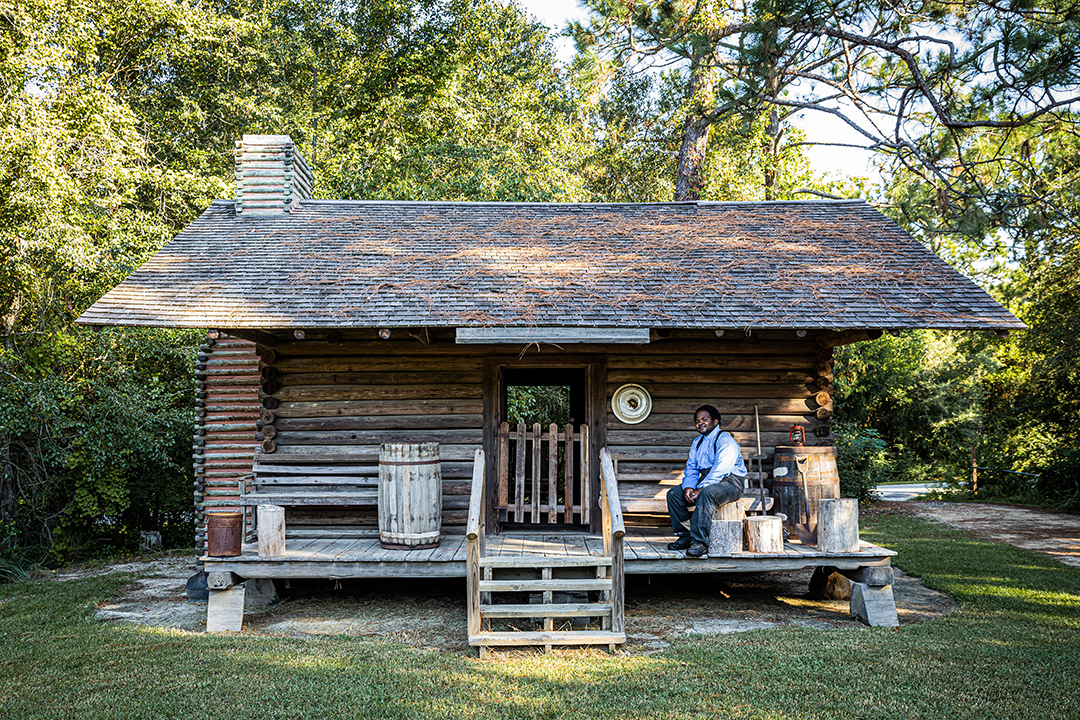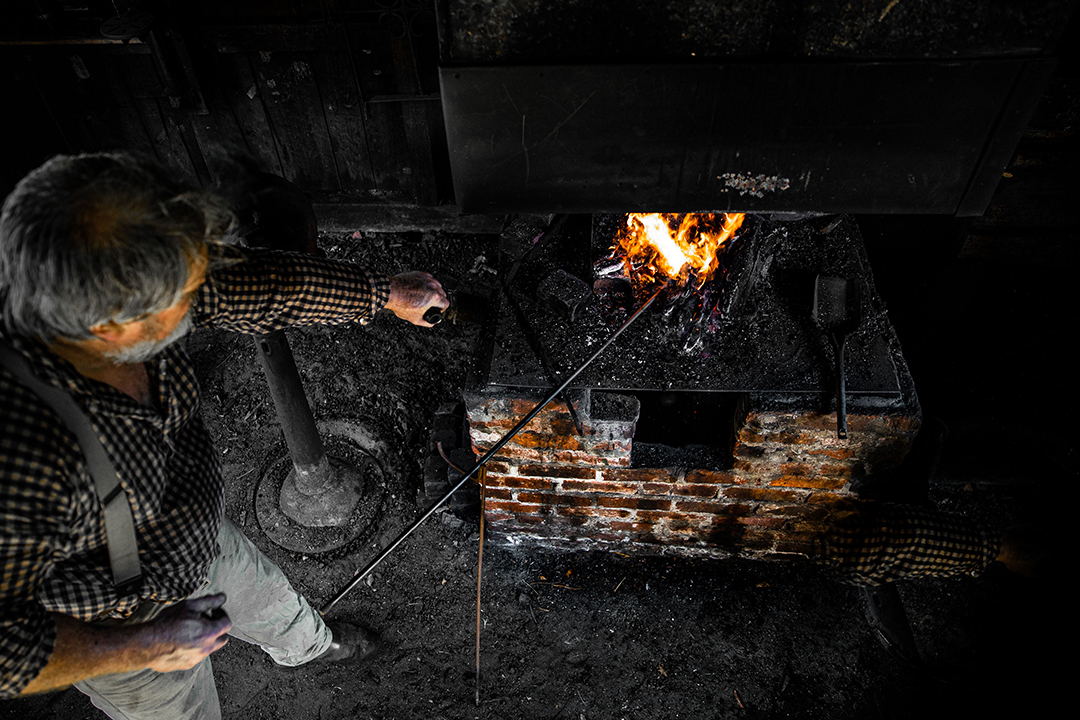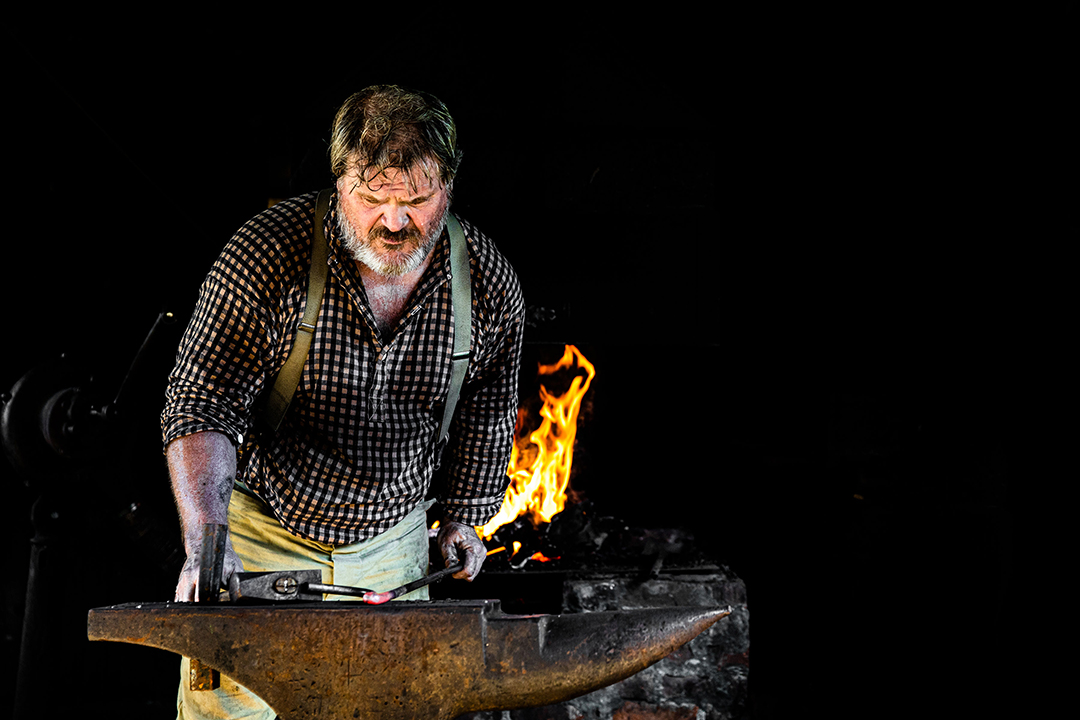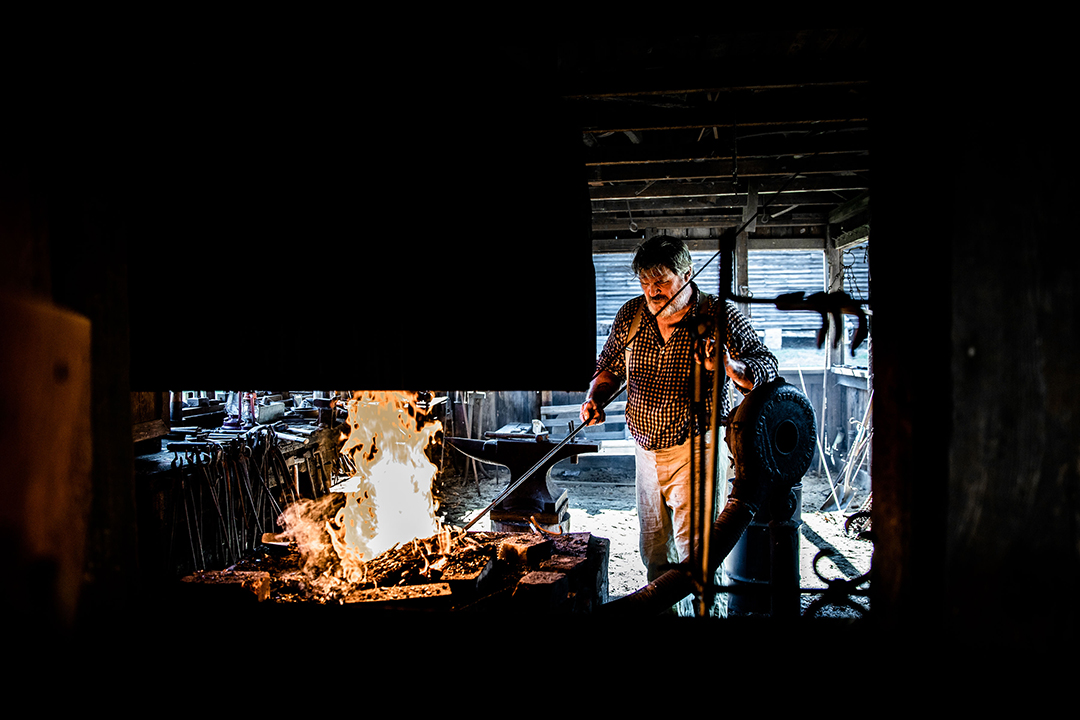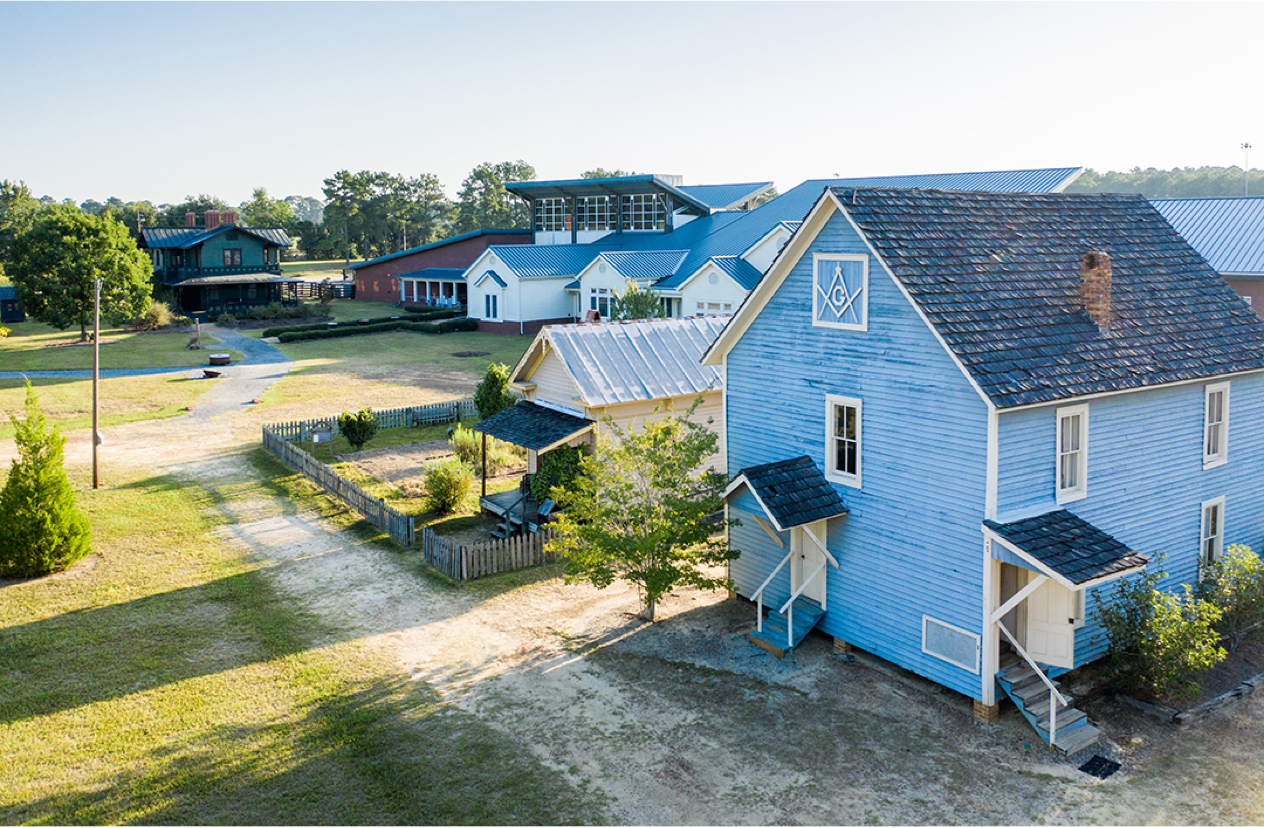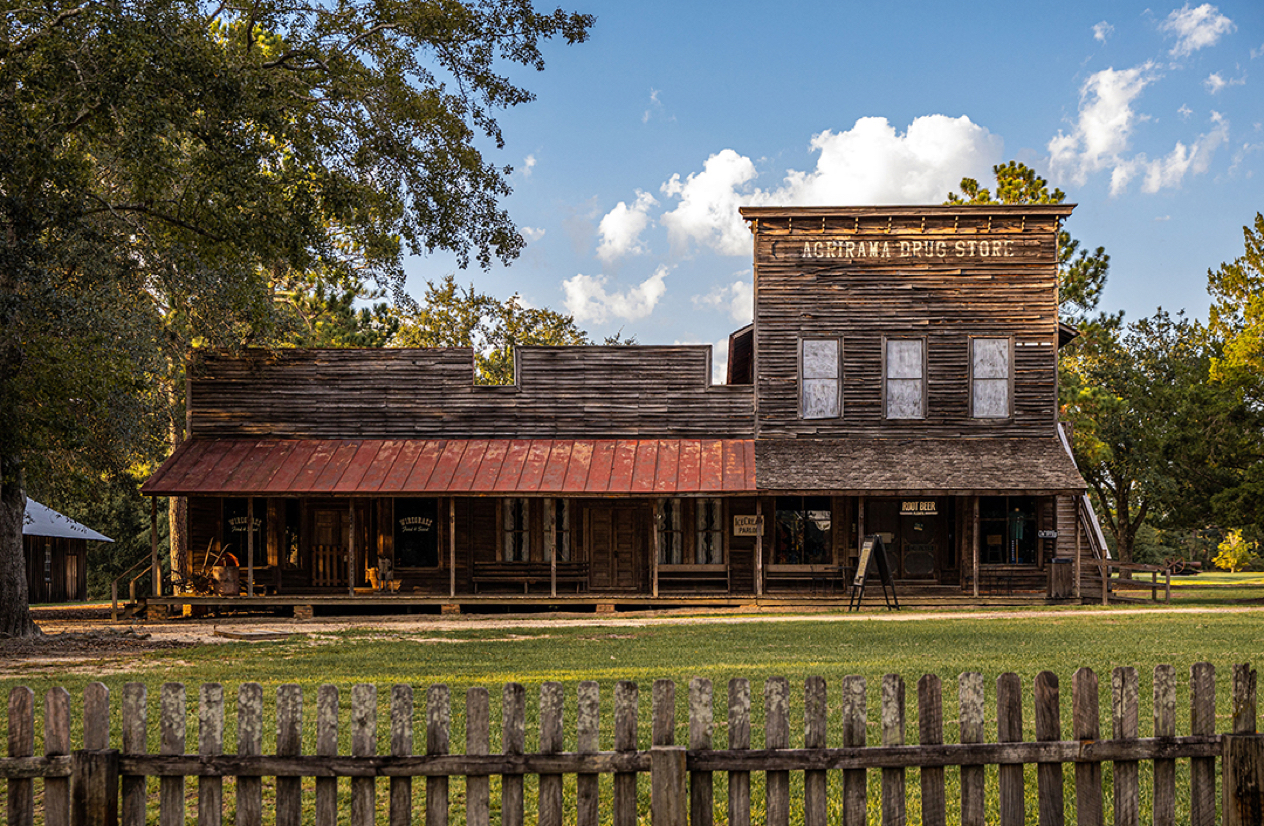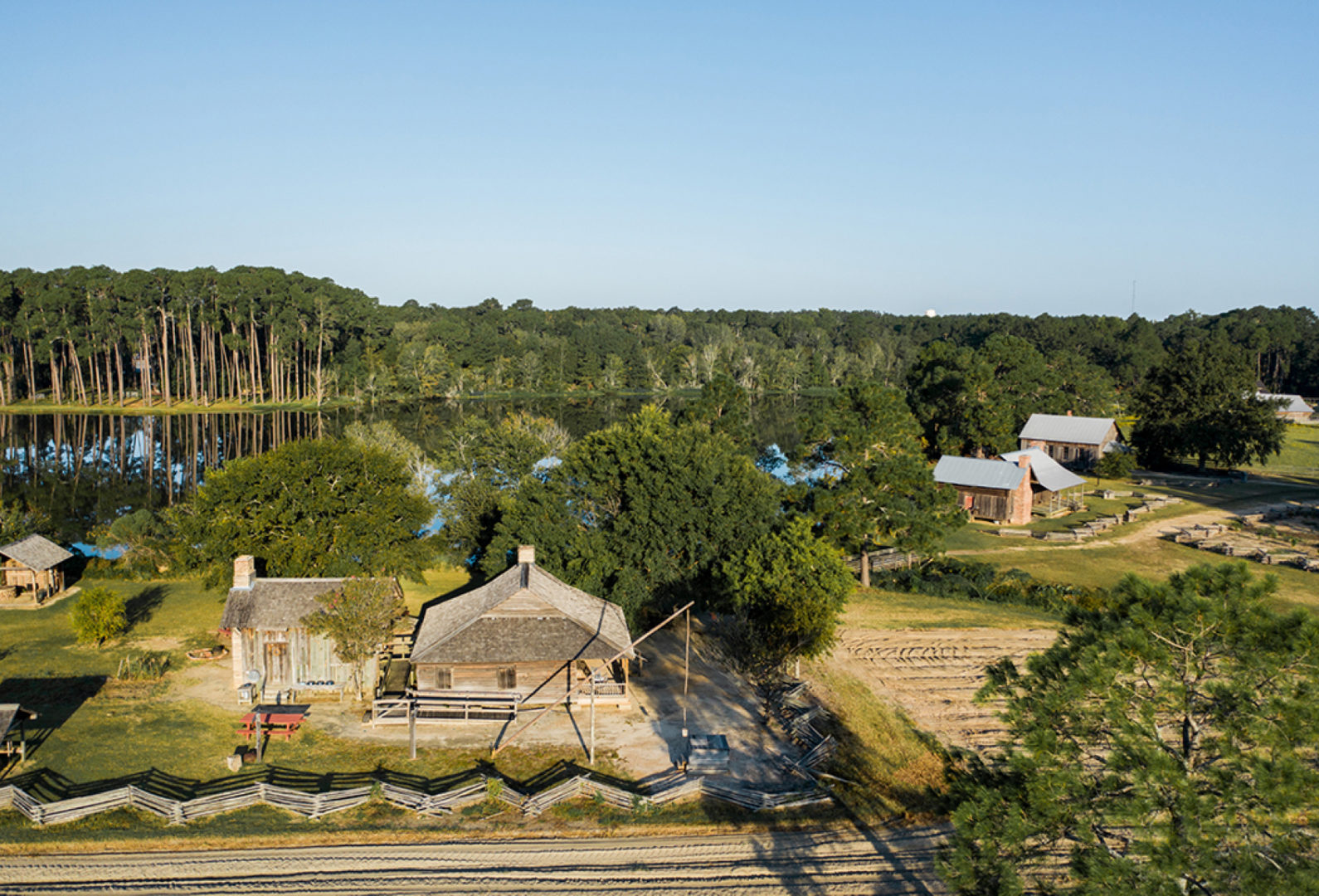The Montezuma Railroad Depot was built most likely between 1895 and 1905, and was a “prefab” building- a common means of constructing the depots used by the early railroads to keep up with the rapid pace of railroad expansion. The Depot was donated to the museum by the Seaboard Coast Line. The Depot was restored on site and includes artifact-populated freight warehouse space, waiting rooms, ticket offices, telegraph office. The exhibit includes a loading train platform and a fully operational water tower outside.
Industrial Complex
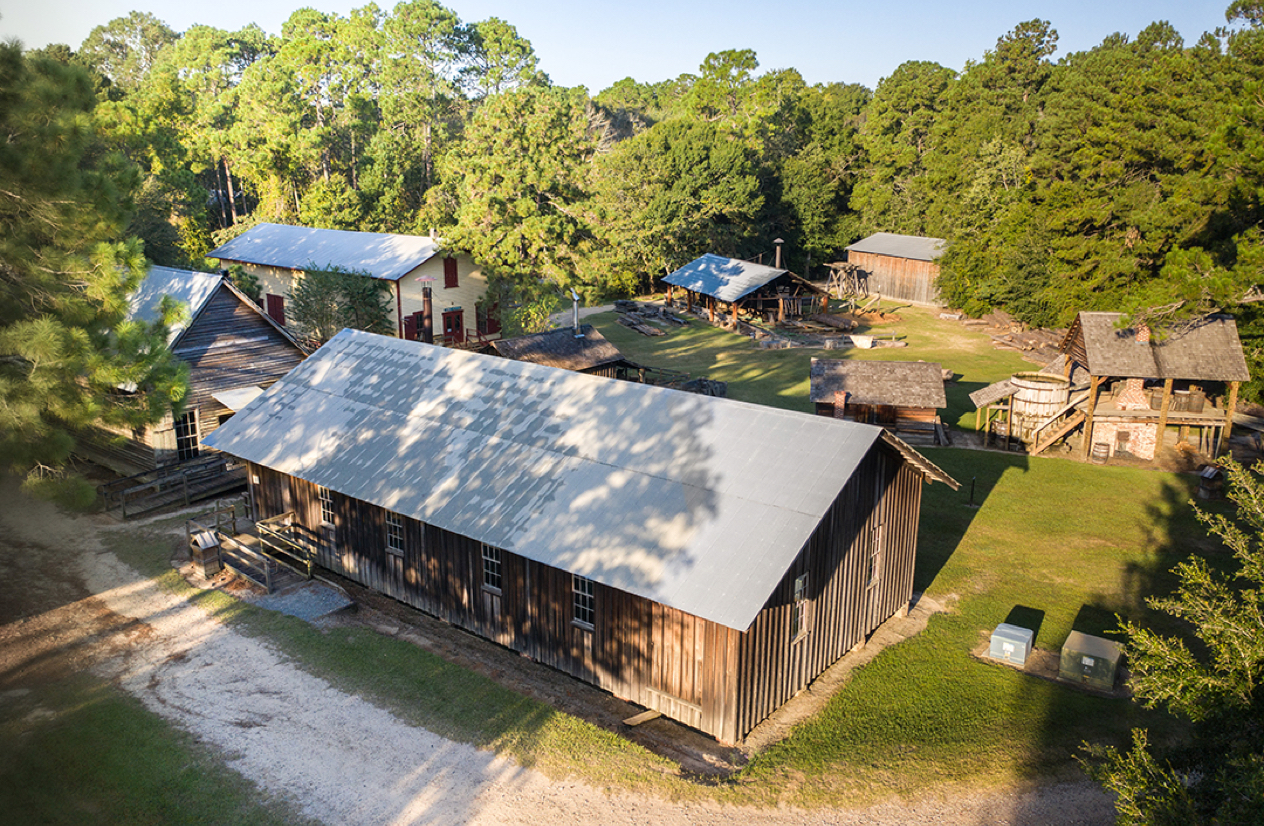
The Industrial Complex on the west end of Main Street showcases businesses that played vital roles in the daily lives of those individuals in a mill town within the Wiregrass Region.
Train Depot
1895-1905Saw Mill
1892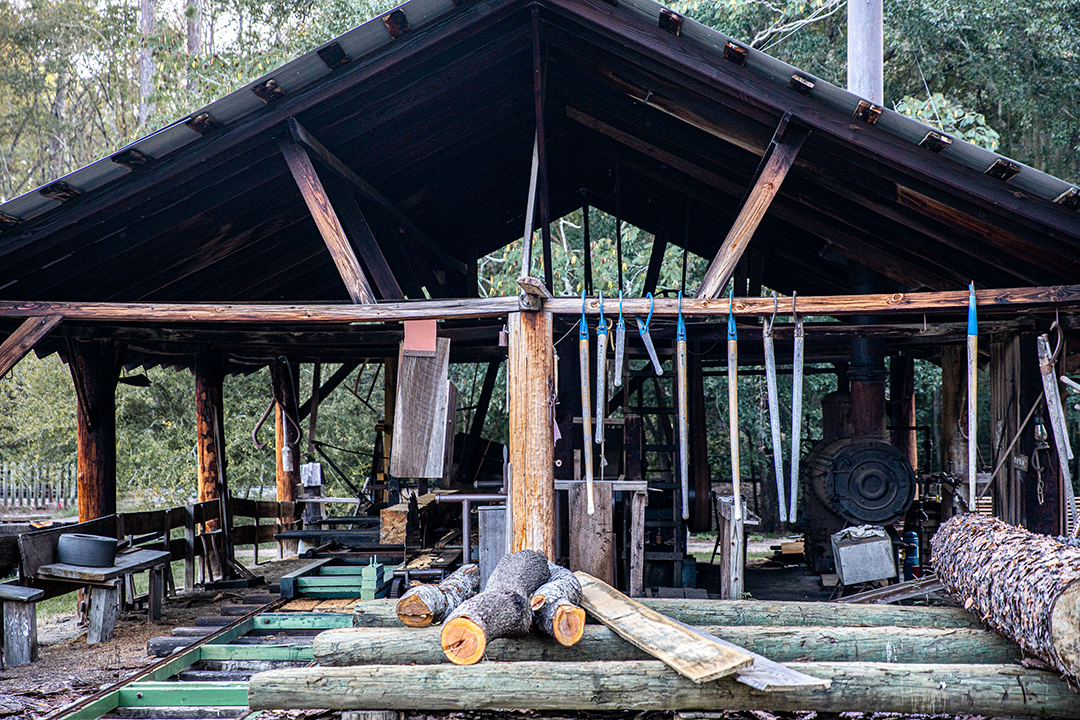
Guest Experiences May Include
Sawmill operation demonstrations; Timber prep/ wood finishing demonstrations
Turpentine Still
1870s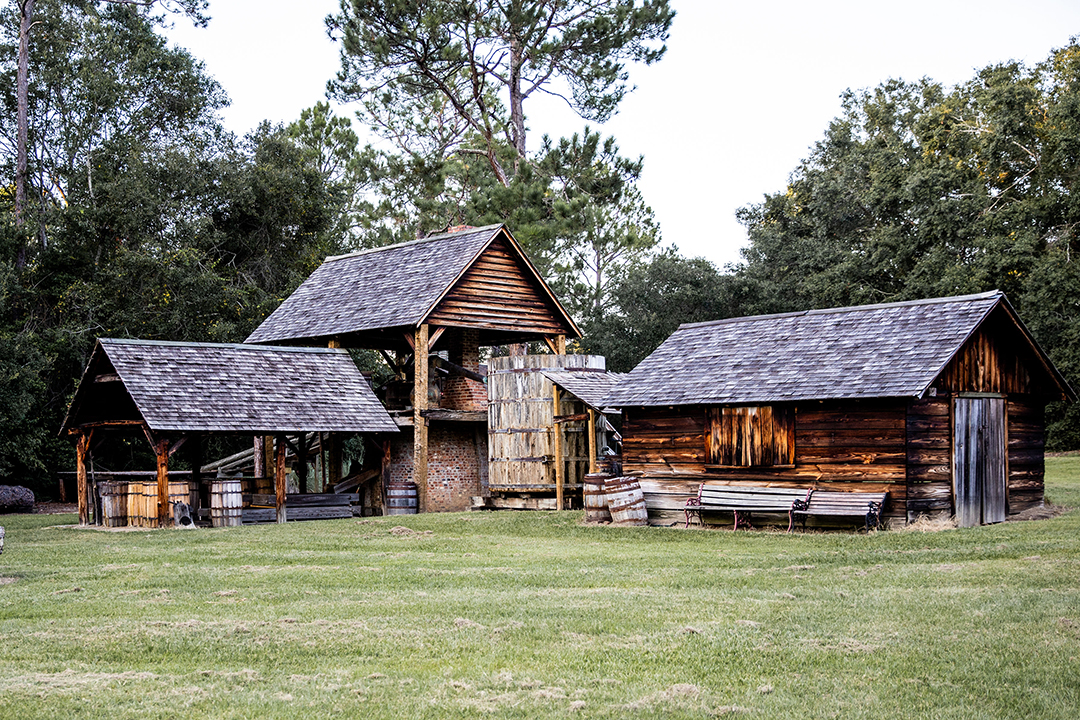
Guest Experiences May Include
Turpentine processing demonstrations; Production of turpentine-based products
Cooper Shed
Located within close proximity to the turpentine still area of operation, the Cooper’s Shed, housed a skilled artisan specializing in making wooden barrels, casks, buckets, tubs, troughs and other staved containers from timber. The cooper also produced wooden implements, such as rakes and shovels.
Guest Experiences May Include
The art of coopering; Production demonstrations of utensils, casks, drums, and barrels
Knight Cabin
1870sGuest Experiences May Include
Leisure, art and cultural demonstrations; Cooking demonstrations
Blacksmith Shop
Guest Experiences May Include
Handcrafted metalwork; Farm and animal implement and tool making demonstrations
Variety Works
Many of the larger saw mills and some towns in the Wiregrass area had woodworking shops commonly called variety works. The function of these small establishments was simply to manufacture a variety of wood products for the community. The variety works was capable of producing anything made of wood, the only limit being the creativity of the craftsmen who worked there. The variety works usually did not mass-produce items, but instead produced only what was ordered by members of the community. Building materials such as doors, sashes, blinds, and molding were the most commonly produced items.
Guest Experiences May Include
Handcrafted wooden products; Steam power and its effect on labor and industry; Woodworking demonstrations
Continue Exploring
Back to Historic Village


